Walking the Ignatian Camino – Part 1 of 2
In May-June 2019 I walked the Ignatian camino -- the camino ignaciano -- in northern Spain. I wanted to do a long retreat, and having been to Santiago de Compostela some years ago by train, I chose a different walk. The Ignatian camino does not go to Compostela, but starts in the Basque country in north-central Spain at Loyola castle and ends near Barcelona at the town of Manresa.
This camino was founded 10 years ago by the Jesuits. It follows a journey made by Ignatius of Loyola during his conversion. As a young minor noble, Ignatius sought a career as a courtier and soldier. However, in 1521 his leg was badly broken by a cannonball in battle.
Ignatius had to re-think his plans. At home recovering, he began reading the bible and the lives of the saints and began to imagine achieving another sort of glory. He decided to make a pilgrimage to the Holy Land.
Getting there meant Ignatius had to travel to Barcelona to set sail. Early in 1522, against his family’s wishes, he set out from Loyola, travelling initially with a mule and two servants. He would soon send the servants home and later would shed his sword and noble clothes.
The camino ignaciano follows Ignatius’ journey towards Barcelona. The journey, especially his time at Montserrat and Manresa, would mark him forever. His experiences became the basis of his famous Spiritual Exercises.
During this walk I used the Exercises’ framework for prayer each day. I would spend the first two to three hours of each day’s walk meditating on the themes and scripture readings. The landscapes and the events of the journey also became part of the prayer.
There were few fellow pilgrims, and for the first ten days I walked alone. Then I was blessed to be joined by two Dutchmen doing the same route. We walked as a group for the rest of the way, and the experience of community became central to my journey.
The first week through the steep Basque hills was a fitness challenge. Then the camino followed the flatter, undulating Ebro river valley for 12 days. The third week took us into the desert of Los Monegros. The final week was through Catalonia towards Montserrat mountain.
That first week was about finding a walking rhythm and finding signposts, accommodation and food. The beautiful, hilly Basque countryside enabled gratitude to grow in me for many blessings received. The mountainous terrain brought reflection on the ups and downs of life.
In the second week came the wine-growing zone of La Rioja. At Logrono I crossed the path of the French camino to Compostela and many pilgrims going in the opposite direction. Most looked mystified at my heading the ‘wrong’ way.
Halfway through the walk was Zaragoza and the shrine of the Virgin of the Pillar, Virgen del Pilar. The shrine marks the story of the encounter of a discouraged St James with Our Lady, who asked him to persevere in his mission -- an important part of the story of Christianity in Spain.
During this section an ATM machine ate my only bankcard(!). I was rendered ‘penniless’ for a few days. Fortunately my Dutch companions ‘carried’ me until I was able to get a new card. I reflected more deeply on the place of money in my life, but it also confirmed the practical need for companions on the journey.
The prayer reflections of the third week of the Exercises take us into the torture and death of Jesus. Geographically, we entered the Monegros desert. This hot, dry area looks less harsh than in Ignatius’ time because irrigation has brought crops of corn and cereals to the area, but it was tough walking.
Here we ran short of water and I started to get a difficult blister. The stark landscape sharpened reflection on Jesus’ sufferings. My Protestant-background companions and I had some deep conversations about life, priesthood and family.
In the last week, through Catalonia, we noted evidence of its independence movement. Many towns had graffiti about the ongoing trial of some independence activists. We also passed through the home town of St Peter Claver, a Jesuit who worked among African slaves in Cartagena, Colombia.
Finally, we climbed the remarkable Montserrat mountain to visit its famous Benedictine monastery and its Black Madonna. Mountain and monastery are symbols of Catalan identity, language and faith. When the Barcelona football team wins a major trophy the team bring it to the monastery to offer it to the Virgin.
The climb up this sacred mountain was stiff but I found myself, now fit, almost running up through the large carpark -- the monastery is a major tourist attraction -- leaving my two companions behind. I was keen to savour this place, so signficant in the journey of Ignatius.
Ignatius arrived here for the feast of the Annunciation. He took three days to write out his confession and receive counsel from his confessor. He spent a night standing and kneeling in prayer before the Madonna’s altar. He left his sword and dagger there, symbolically leaving aside his old, military identity.
Ignatius also laid aside his nobleman’s clothes, donating them to a beggar. He put on a sackcloth garment, symbolising his desire to do penance for his past life and live in a new way. For me it was a time to think about what things to lay down or let go of.
The next day we headed down the mountain for our final goal – Manresa,
25 kms away. Ignatius left Montserrat for Barcelona, intending to spend only a few days in Manresa. Eventually he spent nine months there and considered that time central to his spiritual growth. He lived among the poor, and in a cave near the river. He prayed, fasted and sought guidance from local priests and religious.
For me, the arrival at Manresa was an emotional moment, especially spending time in St Ignatius’ cave, now a chapel.
The physical achievement involved 650kms and 27 days walking, but even more, it was a wonderful time of reflection, prayer and learning.
Monsignor Gerard Burns is the Vicar General of the Archdiocese of Wellington.
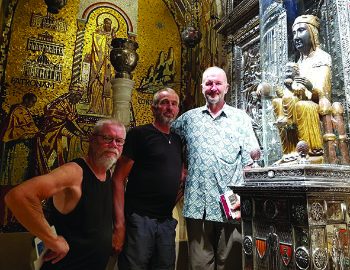
Fr Gerard Burns, right, with his Dutch walking companions and the Black Madonna and Child at Montserrat monastery
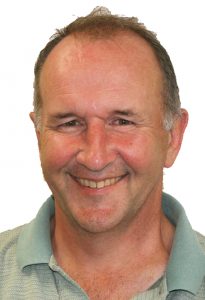
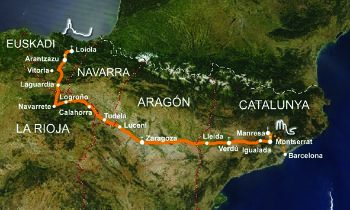
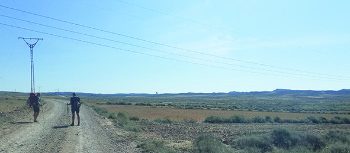
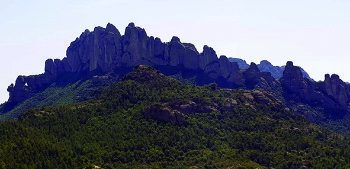
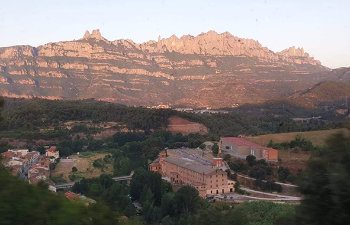
 Entries(RSS)
Entries(RSS)